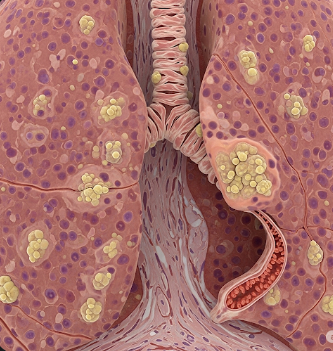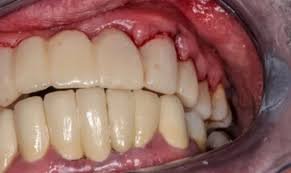Overview
Berylliosis, also known as Chronic Beryllium Disease (CBD), is a rare occupational lung disease caused by exposure to beryllium, a lightweight metal used in aerospace, electronics, and manufacturing industries. The disease triggers an immune-mediated reaction in the lungs, leading to inflammation, granuloma formation, and impaired respiratory function.
In Korea, workers in high-risk industries benefit from workplace safety regulations, early detection programs, and specialized pulmonary care. Although berylliosis is chronic and can lead to long-term lung damage, early recognition and treatment significantly improve outcomes and quality of life.
What is Berylliosis?
Berylliosis is a lung disease caused by immune sensitization to beryllium, often after prolonged inhalation of beryllium dust or fumes. The body’s immune system reacts abnormally, forming granulomas—small clusters of inflammatory cells—that accumulate in lung tissue and sometimes affect other organs. Berylliosis is not infectious and does not spread from person to person.
The condition can manifest as acute, chronic, or latent disease, depending on the level and duration of exposure and individual immune susceptibility.
Symptoms
Symptoms of berylliosis often develop gradually, sometimes years after exposure, and may include:
- Shortness of breath, initially with exertion and later at rest
- Dry cough
- Fatigue and general malaise
- Chest pain or tightness
- Unexplained weight loss
- Night sweats
- Fever in some cases
- Joint or muscle pain in advanced disease
Some individuals may remain asymptomatic for years, only showing lung changes on imaging studies.
Causes
Berylliosis is caused by exposure to beryllium dust, fumes, or particles, which can trigger an immune response in sensitized individuals. Common sources include:
- Aerospace and defense industry materials
- Electronics manufacturing components
- Metal alloy production
- Dental prosthetics or specialty tools containing beryllium
The disease occurs in individuals who develop beryllium sensitivity, an abnormal immune reaction that causes granuloma formation in the lungs and other organs.
Risk Factors
Factors that increase the risk of developing berylliosis include:
- Occupational exposure to beryllium dust or fumes
- Genetic predisposition, particularly variations in the HLA-DP gene
- Smoking, which may worsen lung inflammation
- Duration and intensity of exposure in industrial settings
Complications
Berylliosis can lead to serious complications if left untreated:
- Chronic lung disease and pulmonary fibrosis
- Respiratory failure in severe cases
- Decreased exercise tolerance and chronic fatigue
- Increased susceptibility to infections due to impaired lung function
- Potential involvement of other organs, including skin, liver, or heart in rare cases
Prevention
Prevention focuses on reducing occupational exposure and early detection:
- Use of personal protective equipment (PPE) such as respirators in workplaces
- Proper ventilation and dust control in beryllium-handling facilities
- Regular workplace monitoring for airborne beryllium
- Periodic health screenings for workers, including chest X-rays and lung function tests
- Education about safe handling and immediate reporting of symptoms
Treatment Options in Korea
Diagnosis
Korean medical centers use a combination of tests to confirm berylliosis:
- Occupational history to identify beryllium exposure
- Chest imaging — X-ray or high-resolution CT to detect lung changes
- Pulmonary function tests to assess breathing capacity
- Blood tests for beryllium sensitivity (Beryllium Lymphocyte Proliferation Test, BeLPT)
- Lung biopsy in uncertain cases to confirm granuloma formation
Medical Management
Treatment focuses on controlling inflammation, managing symptoms, and preventing progression:
- Corticosteroids (such as prednisone) to reduce lung inflammation
- Immunosuppressive medications for patients not responding adequately to steroids
- Oxygen therapy in cases of advanced lung impairment
- Symptomatic relief for cough, fatigue, and chest discomfort
Rehabilitation and Support
- Pulmonary rehabilitation programs including breathing exercises
- Nutritional counseling to support immune function
- Smoking cessation programs to reduce lung stress
- Regular follow-ups with pulmonologists for monitoring disease progression
Workplace and Lifestyle Modifications
- Reducing further exposure to beryllium is critical
- Using home air purifiers if living near industrial areas
- Avoiding respiratory irritants such as smoke and chemical fumes
- Engaging in moderate physical activity to maintain lung capacity
Prognosis
The prognosis for berylliosis varies depending on the stage of disease at diagnosis and adherence to treatment. Early detection and prompt initiation of therapy can slow disease progression, improve lung function, and maintain quality of life. Chronic berylliosis may require long-term medical management, but many patients in Korea achieve stable disease with proper care.













